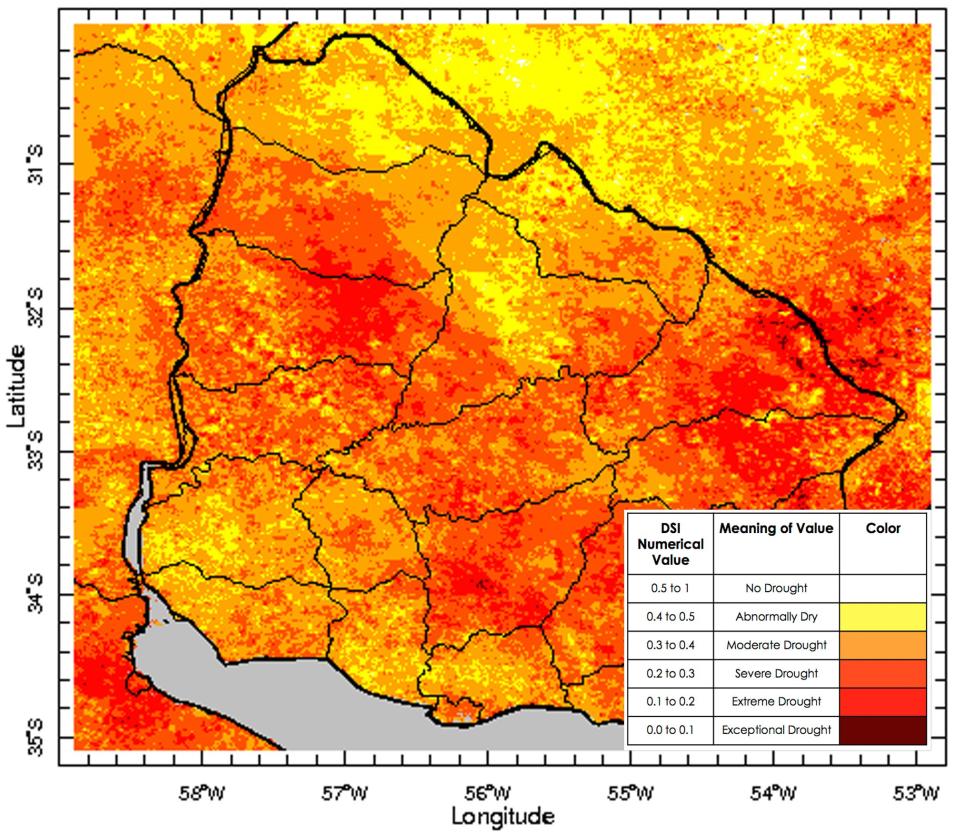In spring 2015, NASA DEVELOP teams used NASA Earth observation data distributed by NASA's Land Processes Distributed Active Archive Center (LP DAAC) in several of their projects. These data included Moderate Resolution Imaging Spectroradiometer (MODIS) and Advanced Spaceborne Thermal Emission and Reflection Radiometer (ASTER). MODIS and ASTER data were applied to assess landslide hazards in the Koshi River Basin in the Himalayans, monitor wetland change in the Great Lakes shoreline, and create habitat suitability maps to measure vector-borne risk in the southwestern United States. They were also used to detect invasive plants in costal Mississippi, as a proxy for air temperature for agriculture in Washington State, and to assist with decision-making for water management in Peru.
For more information about all of the Spring 2015 DEVELOP projects, please visit the DEVELOP archive.
Featured Project: Drought Monitoring in Uruguay
One of the projects, Taking Droughts from Earth to Space, incorporated MODIS data to develop a drought-monitoring tool to help provide drought-related information to local stakeholders in the community. Droughts have been a major concern for the country of Uruguay, affecting their agricultural and energy sectors.
